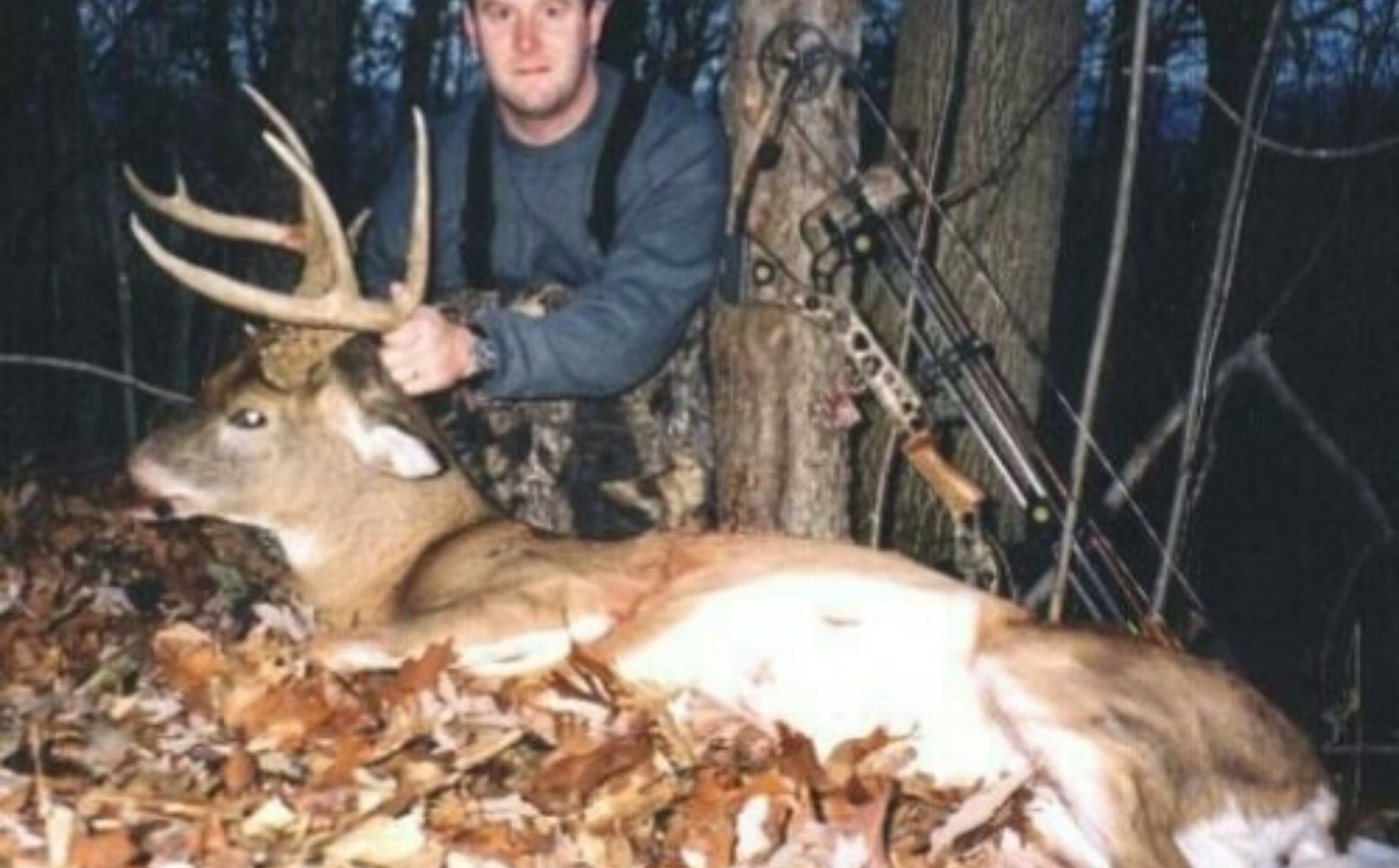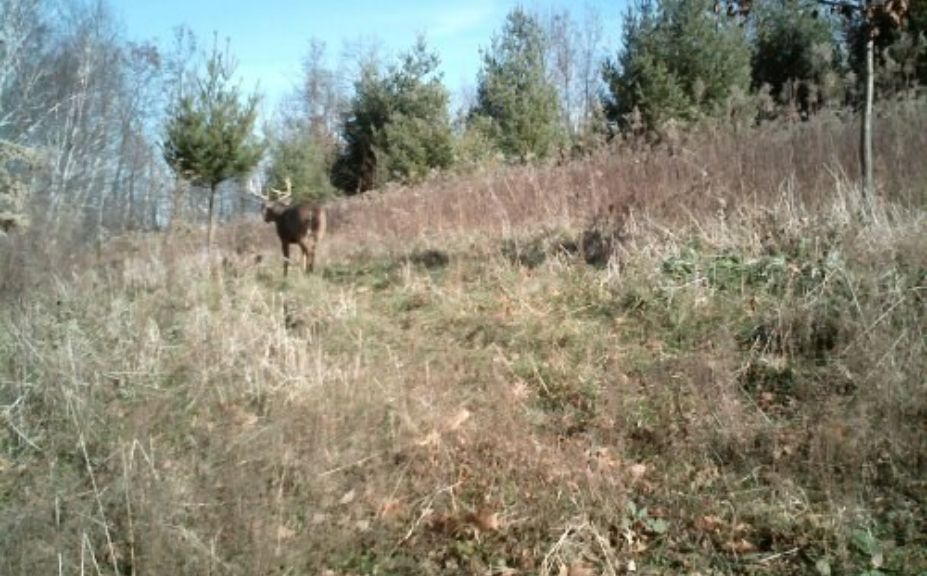
These 2 common hunting techniques most surely have their place, right? However I believe these tactics should be used much less than commonly practiced, if your desire is to consistently harvest mature bucks, to preserve your land, and to promote a quality herd on your small parcel. Sure, either of these techniques can be used under the right conditions to produced an outstanding hunt, but for consistent success they are hard to rely on. I ask that you bare with me to see my reasoning, for at least partially busting these small parcel mature buck hunting myths!
The Morning Food Plot Sit:
In my experience, a morning sit on a food plot, the majority of the year, is nearly a no-win situation. Why? Because you just can't count on a deer...any deer...to not be in the food plot when you arrive.
A game camera on a food plot can reveal a lot more than big buck pics! Long ago I learned the hard way that just because I didn't see or hear any deer that we spooked, didn't mean that I didn't spook any. A camera placement on a remote food plot in the UP of MI roughly 12 years ago revealed a great buck using a small harvest plot the morning of my 45 minute trek and difficult approach across a creek. The only problem was he was using it right before I arrived. It probably doesn't come as a surprise that I never saw that buck, on that plot...again, and I didn't even know I spooked him. That experience has repeated itself often in my whitetail travels, whether they were my own unfortunate experiences (I eventually learned, but stubborn!), or the collective experience of my 100s of clients.
How can you make a morning food plot sit work?
1. Accessing a morning food plot, adjacent to an outanding and remote mature buck bedding area can yield morning results, especially during any period of the rut. During the early season, I just haven't seen enough evidence that a mature buck will leave his bedding area (which probably has adequate daytime browse already) and travel 75-100 yards or more to a small food source. However, during the rut, that small food source can be come an outstanding spot to hunt as a buck leaves his bed to investigate the social hotspot during the hours of mid-morning. However, even under those conditions I still use another technique!
2. When hunting a small plot, I like to arrive just at first light, or right after light so that if possible I can make sure that the coast is clear, and head into a stand. I find it's tough to beat deer to the plot during the morning hours, so instead, a better idea is to let them go to bed...and then wait for their mid-morning feeding or cruising period to take place. Often, the best hours to shoot a mature buck on a hidden plot are from mid-morning to the close of shooting hours, in particular if a mature buck bedding area is nearby. However I haven't been convinced that for consistent success, the reward of taking a seat after an approach to an early morning food plot, is greater than the risk.

The All Day Sit:
Ok, if your blood isn't boiling yet...maybe now? The more I deer hunt, the fewer all-day sits I make. In fact, would you believe that I other than during gun season, I can't remember my last all-day sit? If I remember correctly, I believe it has been over 10 years! Why? Because the time of the season to do so is very limited, and the number of stand locations that feature a high value sit the entire day, is even more limited.
Mature bucks in general move for several reasons. During the early season they move for food, or hunting pressure. If you are located in a high pressure area you may get extremely lucky by having a nearby hunter spook a mature buck out of his bedding area and then past your bowstand, but rarely do mature bucks move during the midday hours, during the early bow season. When the rut rolls around it's possible a buck will move all day, but even during the Pre-rut the odds of him not settling down during at least the majority of the afternoon, are low. That leaves the the Peak-rut to the Post-rut, where a mature monarch can and will, move all day long. However, even if a mature buck is moving in the woods, does the same stand typically feature a high value sit the entire day? I believe the vast majority of the time the answer is "No".
During the rut, I focus almost exclusively on bedding areas during the morning hours. But once noon to 1pm hits, I turn that focus to food. The closer it gets towards dark, the more chance you have of a buck heading towards the social hotspots of food. It's hard to cover all the possible daytime mature buck movements in 1 spot! If you are located near a great bedding area, or between bedding areas, the closer towards afternoon you get, the more a mature buck will turn his focus towards food. If you choose a mornign sit over food, you may spook deer during your morning while at the same time potentially missing an outstanding, high value sit closer to a buck's core, daytime honeyhole.
What are the ingredients for an All Day Sit?
1. During the Peak to Post-rut, taking an all day sit can be quite productive! The timing is right for mature bucks moving all day, and I focus my sits between a food source and bedding areas, on a cruising trail both between the two hotspots, as well as a cruising trail that allows bucks to cross those food to bedding trails, perpendicularly, to form an X of potential deer movement. I will only use a spot like this if it is located within heavy, secure cover and by adding a waterhole on a dry parcel, you can potentially enjoy movement all day long! But even if you have all of these ingredients, where does your scent blow all day long? Often a good wind for the morning hours flips to a bad wind direction for the afternoon hours. Also, you may find that you have a great stand to sit for the morning, a great stand to sit in the evening...but when you sit between the two your odds are not as high as if you sat in one location, or the other.
2. I have to make a confession: I do sit all day! However, when I sit all day, I use 2 different stands. I simply move, to maintain a high value sit all day. I like to choose the best morning, rut-cruising bedding area that I can find, flipping to an evening food source related stand during the afternoon. Often, I sit until noon or 1, but it really depends on the activity level of the sit. Depending on the stand I may even move at 10am or 11, if my confidence level is low for the adjacent bedding areas. I feel all sits have a ranking for the day. Some stand locations are a 1/10 for the given conditions and of course I avoid them. Some are a 5/10 posibly because they were just used a few days prior or the sign is lacking, and some set-ups carry the potential for a full 10/10, when the current conditions merge to form the "perfect" sit opportunity. My goal is to recognize to 10/10 sits, 1 for the morning, 1 for the afternoon...and enjoy the best the property has to offer, on that given day. I have also used 3 stands in 1 day! By using a funnel stand during the early morning, well away from bedding and feeding I can take advantage of an early morning cruiser as he is traveling between major cover parcels. I then have switched a great waterhole adjacent to open and large food sources where mature bucks have the potential to visit during all hours of the day, and then I move to an evening stand so that my scent doesn't continue to blow into the food source to possibly alert deer. It may sound like a lot of moving, but if you contain your movements for the most part to non-deer areas that also won't hold your scent, you can maximize your potential each and every time you climb a tree. You can also make sure that you don't blow your scent into deer during the afternoon by using a morning stand that wasn't designed for taking advantage of evening food source movements.
Conclusion
Choosing the "perfect" stand for the current conditions can greatly maximize your success, but it can also preserve your land because typically a great stand is a great stand, because you can access that stand without spooking deer. Our ability to choose exactly where we believe our next buck of a lifetime to be located is one thing, but when we can make that decision while at the same time getting in and out of that stand like a predator, WOW-great things generally happen! If you can only hunt a small whitetail parcel of 100 acres or less, getting the most out of your sits while at the same time minimizing the effects of your sit is even more critical to both your hunting and herd management success. Why is a morning stand a great stand? Because it's a good spot, but at the same time you can get in and out without spooking deer during the morning hours. That's the same with a mid-day stand, as well as an evening stand. Whether you are tempted to hunt a food plot or bedding area, there is always the potential for a 10/10 sit if you match the stand, to the current conditions. And when you match your treestand rotation to the current conditions, you should be able to leave a very low impact while practicing your small parcel mature buck hunting efforts.